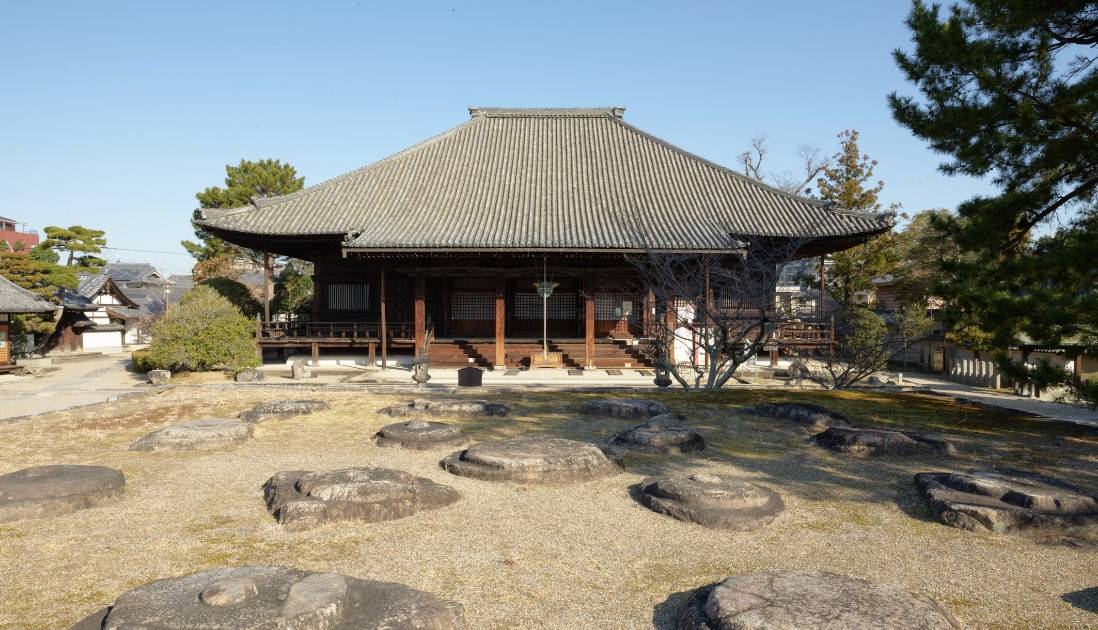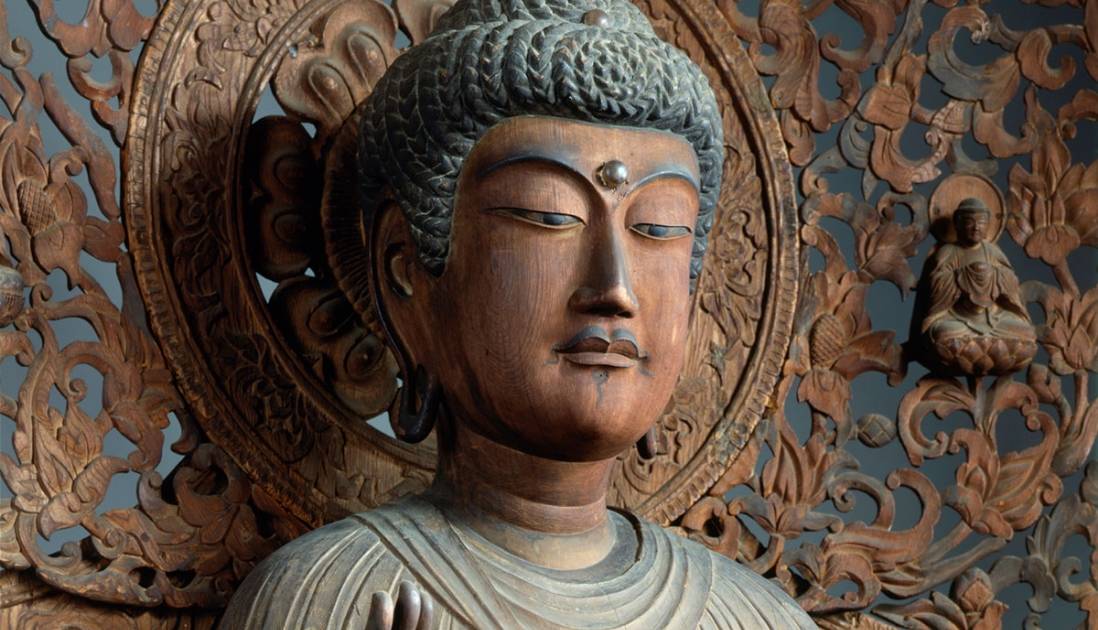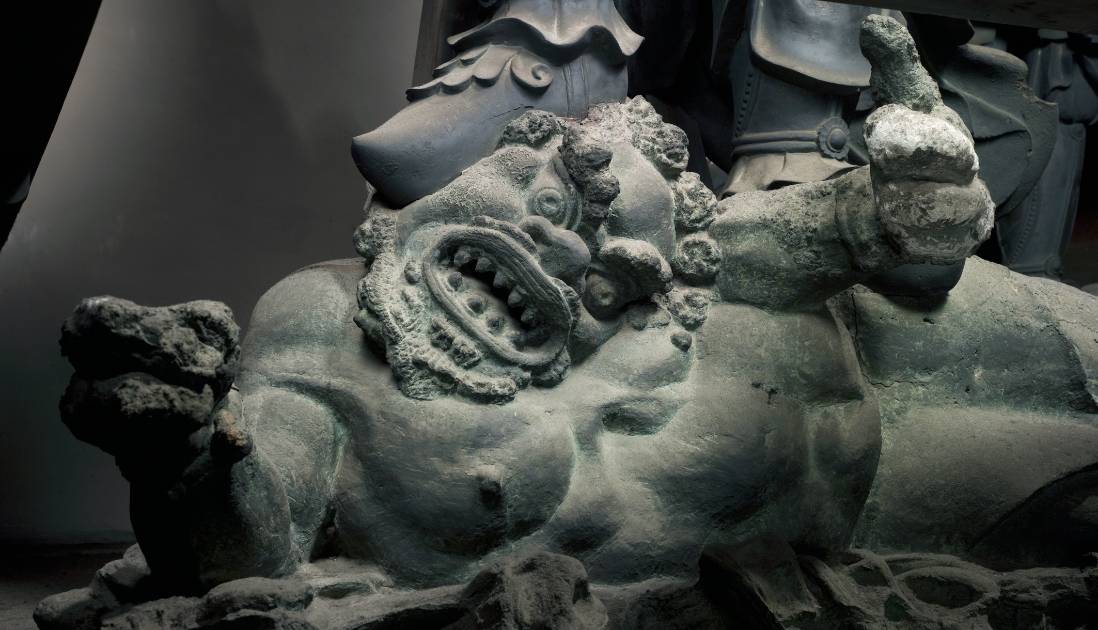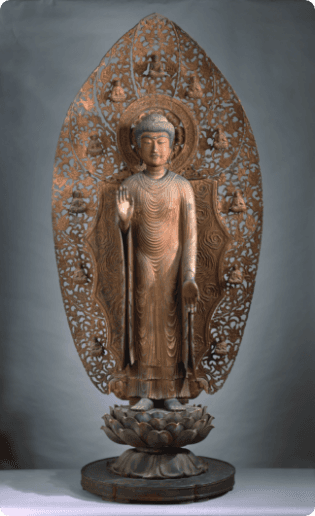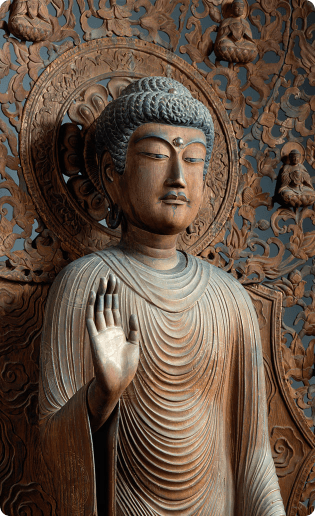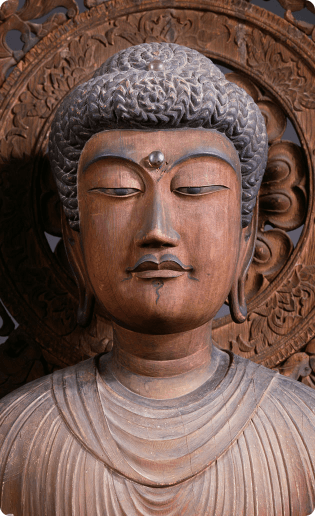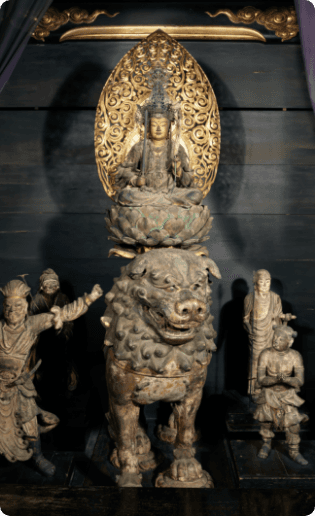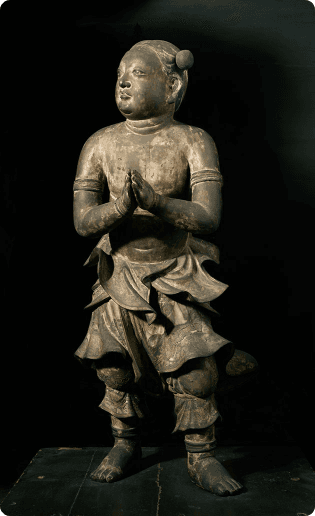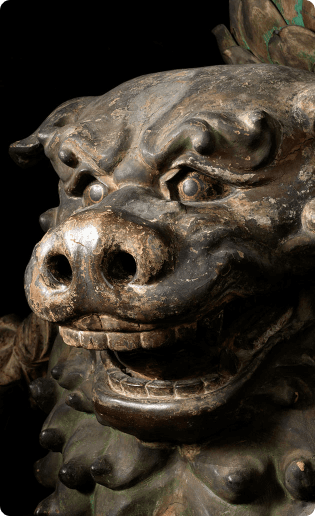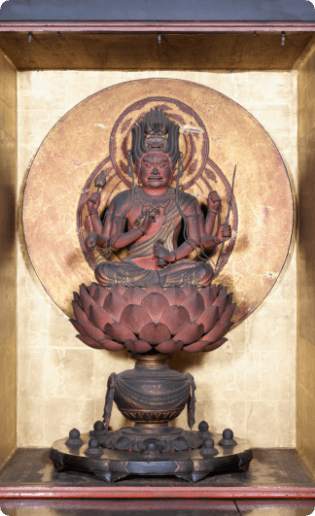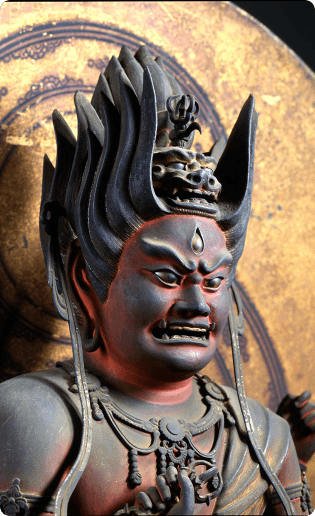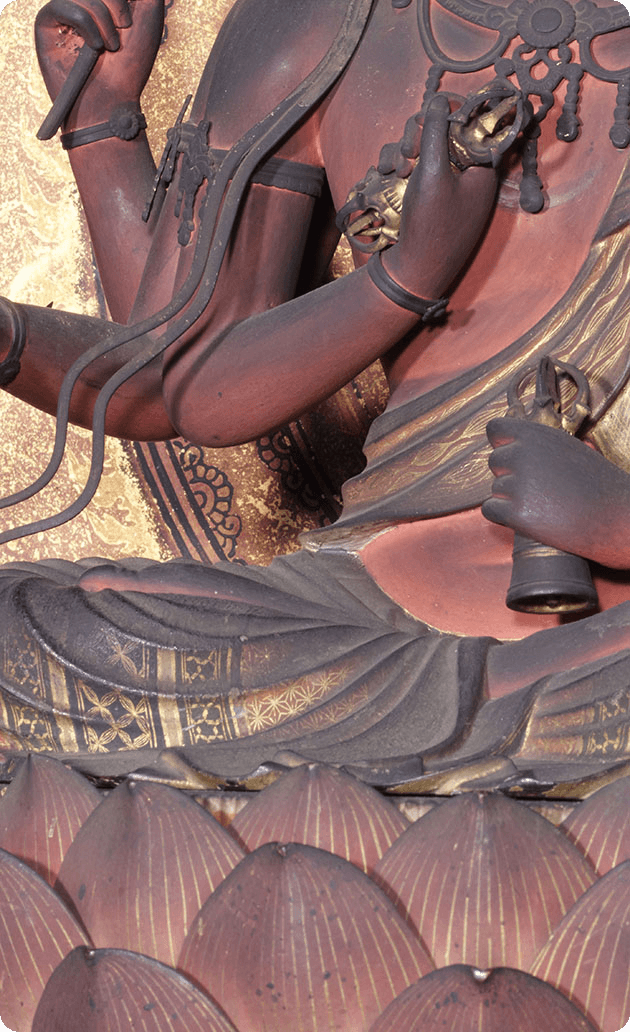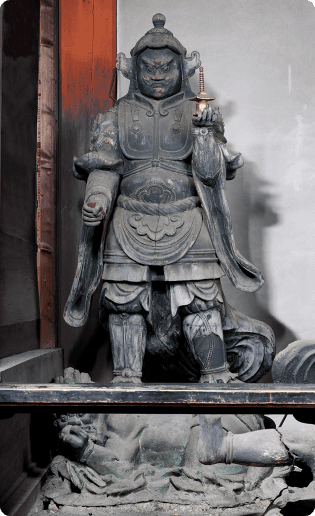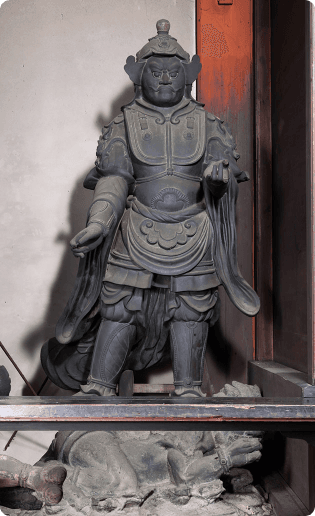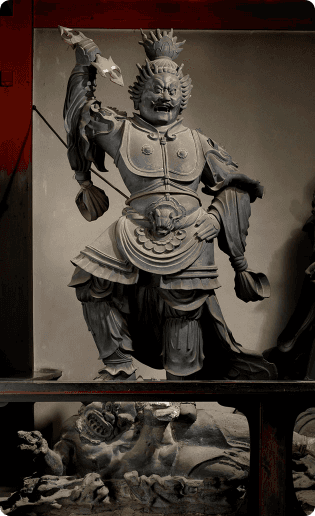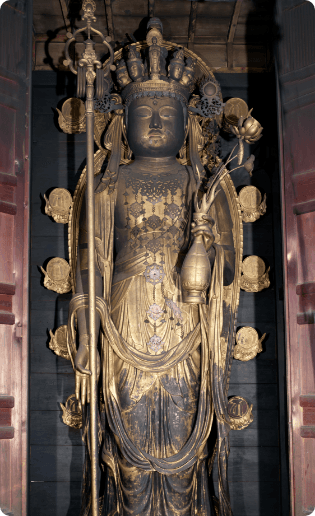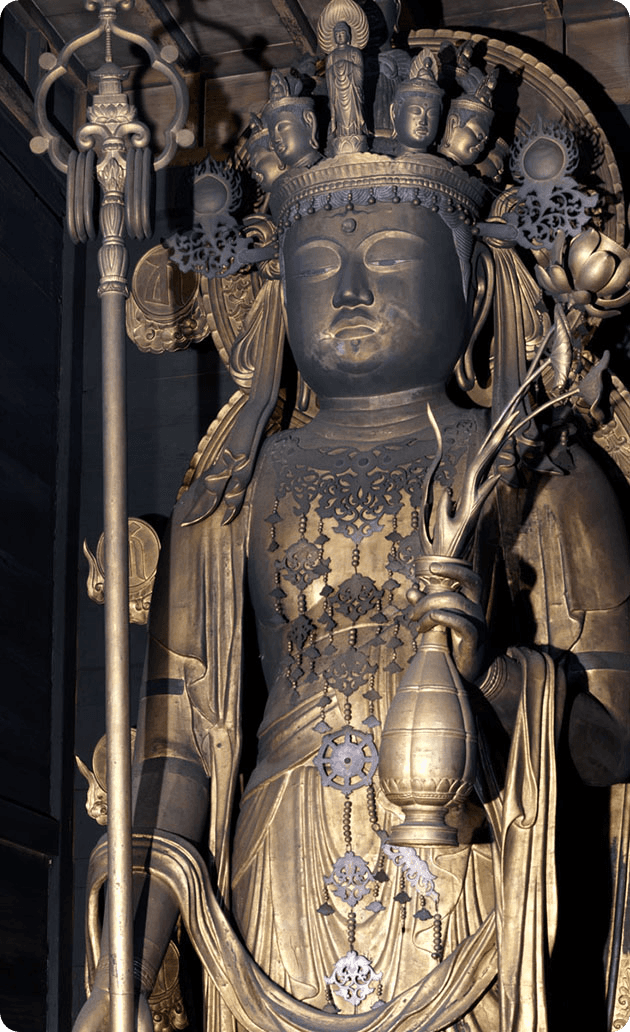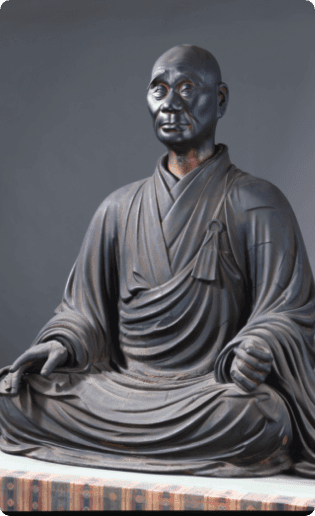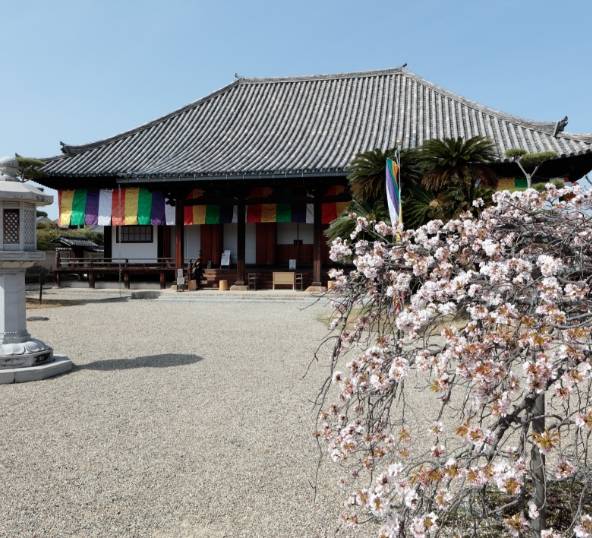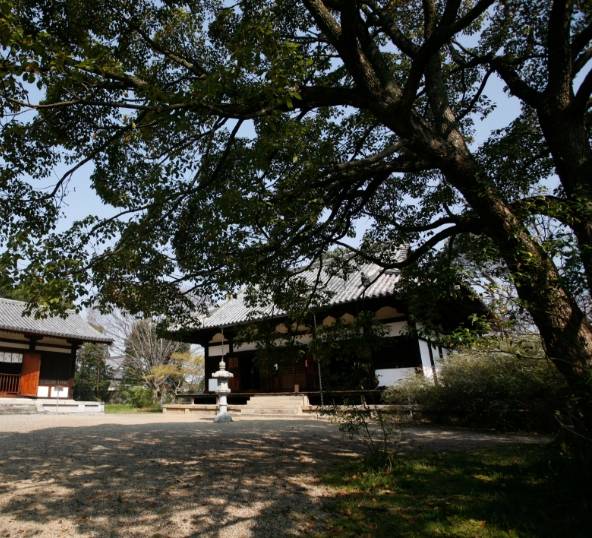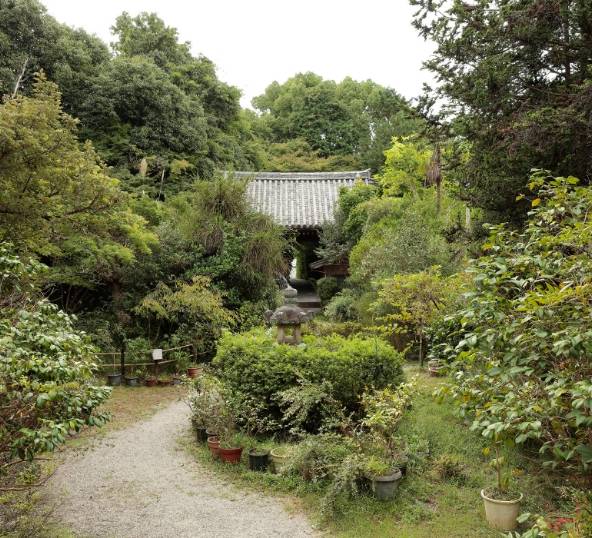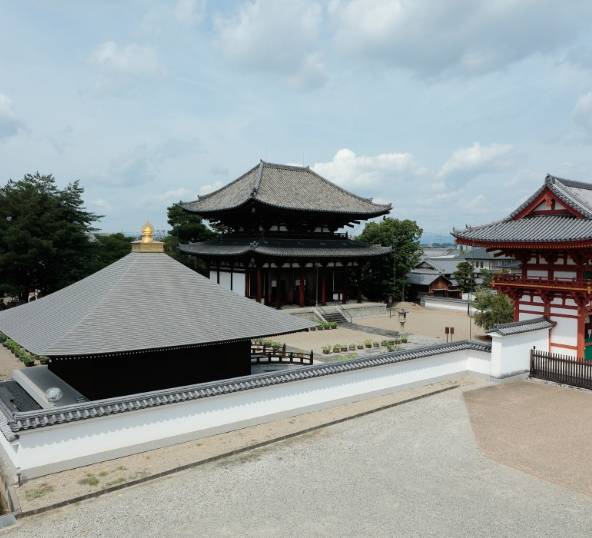Saidaiji
西大寺
この里は 継ぎて霜や置く 夏の世に わが見し草は 黄葉ちたりけり
Empress Shotoku (713–770) called for the construction of Saidaiji Temple in the eighth century as a place to pray for the peace and safety of the nation. Roughly translated as “Great Western Temple,” it was conceived as a counterpart to Todaiji Temple to the east, home of the Great Buddha of Nara, which was commissioned by her father, Emperor Shomu (701–756). Between the two temples stood the Imperial Palace of Heijo. Construction of Saidaiji began in 765 and lasted through 780. This lengthy undertaking reflects the temple’s original massive scale. It had around 110 buildings, including two magnificent pagodas, and covered an area of about 48 hectares.
Sadly, a series of natural disasters during the Heian period (794–1185) destroyed most of the temple’s original structures. In the middle of the Kamakura period (1185–1333), the Buddhist priest Eison (1201–1290) decided to revive Saidaiji as a seminary for the Shingon Ritsu movement. Eison was a tireless Buddhist teacher who established traditions at Saidaiji that are still observed more than 700 years after his death. Saidaiji Temple continues to be a center of Shingon Risshu teaching, as well as an important place of worship for people in the local community.
National Treasures and Important Cultural Properties
Hign
Within the Temple Precincts
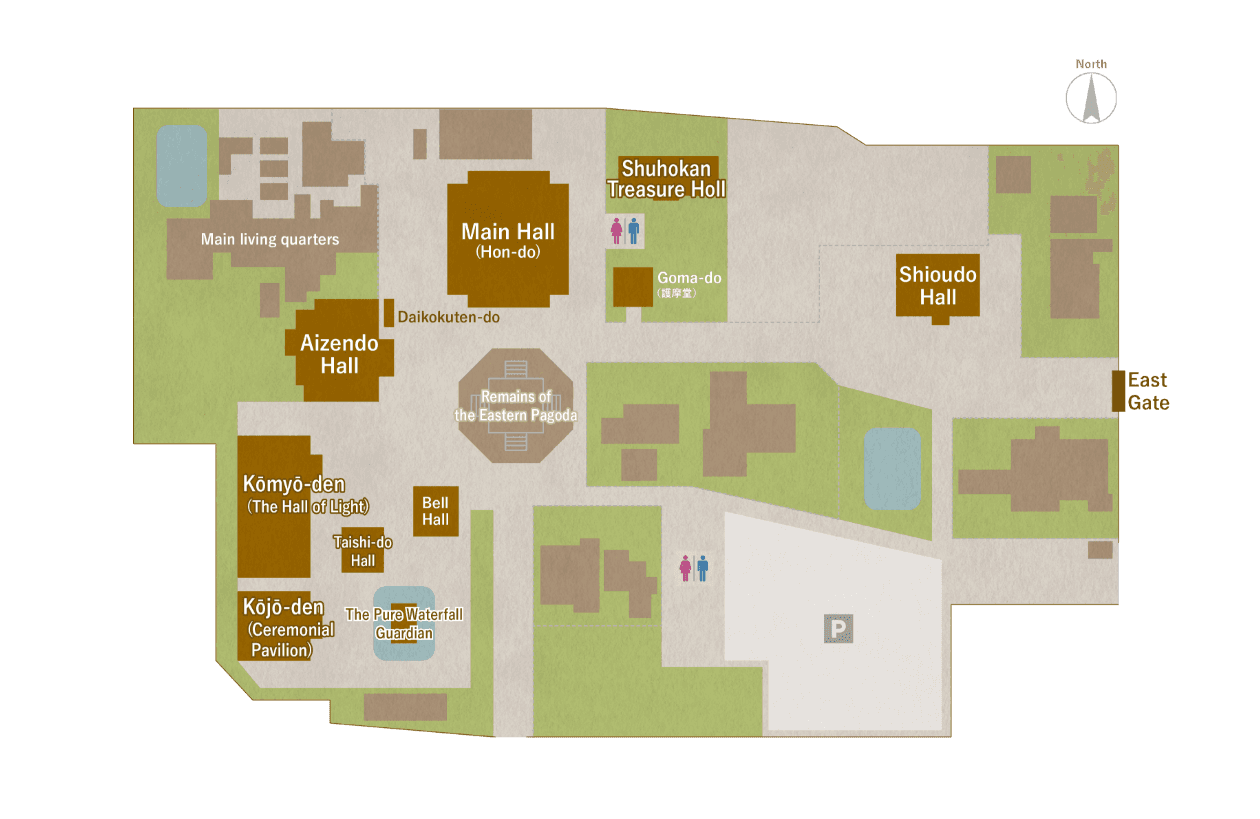
※ Please pay the admission fee at either the main hall, the Four Kings Hall, or the Aizen Hall.
Scroll

Nara Prefecture designated Cultural Property Aizendo Hall
The Aizen-Do hall, which houses the statue, has several features. Measuring 14.4 meters wide and 19.8 meters long, the building was moved here from Kyoto in 1762. Originally it was a house owned by the aristocratic Konoe family, and thus has architectural elements of a residence of the upper stratum of society. The central section of the Aizen-Do is divided into the innermost part and the outer part. On the north is Kyakuden, a reception area for distinguished visitors and on the south is Otamaya, a memorial area for commemorating successive head priests.

Keywords to Help Understanding of the Temple
Keywords
Ōchamori (Grand Tea-serving) Ceremony
The tradition originates from the Kamakura period, when Eison Shōnin, a revered Buddhist monk, expressed his gratitude for the restoration of the temple by offering tea to visitors. A special feature of the ceremony is the large vessel (over 30 cm in diameter) used to serve the tea. In addition to the tea, participants are treated to Japanese sweets, one of which is modeled after the "Kaiki Shōhō", the oldest gold coin found in Japan.
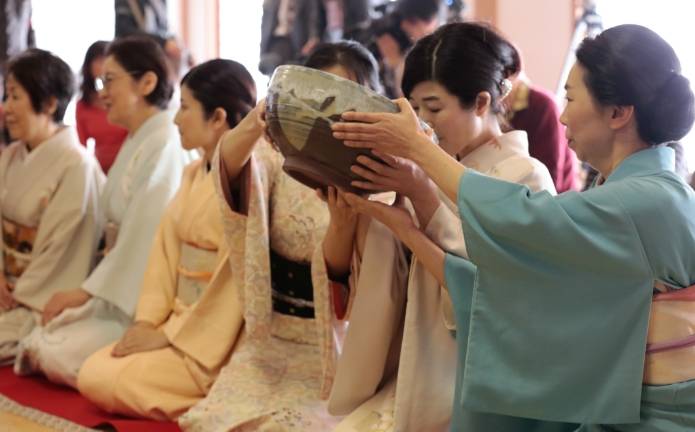
Basic Information
Saidaiji
- Official Website
- https://saidaiji.or.jp/english/
- Hours
- 8:30 - 16:30 (Last Admission, 16:00)
- Entrance fee
-
Combined Admission for three halls: Main Hall, Four Kings Hall, Aizen Hall
Adults: 800 yen
Junior & Senior High-School Students: 600 yen
Elementary School Students: 400 yen
Note:
The Juhōkan ( Treasure Hall) requires an additional 300 yen for entry. (Open three times a year: January 15th to February 4th, April 20th to May 10th, October 25th to November 15th.) Please check the official website for details on various discounts.
- Access
- About a 3-minute walk from Kintetsu Yamato-Saidaiji Station.
- Tel
- 0742-45-4700
Other temples in the Saki district
Temple
The original text and modern translation of the Man'yōshū on this site are quoted from Kodansha Bunko's Man'yōshū Complete Translation with Notes and Original Text (by Susumu Nakanishi).
